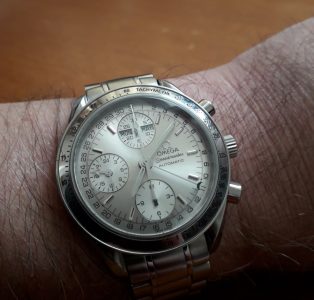I mentioned in a previous article about the benefit of my GR (gut reaction) technique when first seeing a watch – or anything else I am interested in for that matter. In a little more detail, the process usually involves scanning a sale site and monitoring my reaction to items that flow by. If I see something I like I scream to a halt, and then drill down into the details and pictures to confirm price, features, and condition. I then continue to other watches and make a short list of potentially interesting morsels. I will go back again and study each some more. After this I will then do research on the internet to see if there are any reviews, and also of course what other sellers are charging. At this point, if all is well, then I will contact the vendor and discuss the piece in more detail, including any movement in price!
The aforementioned phenomenon occurred recently whilst browsing James Kibble’s online watch boutique. Frankly, I should not have really been anywhere near the thing as invariably it results in a purchase. All I can offer in mitigation is that I was bored – mainly due to the CV lock-down so I am going to blame the damn virus!! Anyway, the process flowed to fruition, so, I ended up with another watch – on this occasion an Omega Speedmaster Triple Date! After receiving the piece, and bearing in mind I had not been able to personally view, I am pleased to report that my GR instinct was correct. I like the watch and have been wearing it most days. Clearly it helps greatly if you have had previous experience with the vendor as I have had with James.
Moving on, long-suffering readers of mine will know that I have a liking for chronographs and preferably with a date complication. Additionally, that I prefer a certain size range – say 38 mm – 40 mm (42 mm at a real push) along with desiring accompaniments – boxes, receipts, manuals and so on. Finally, a quality brand name and if possible a respected model. All these requirements were met when I alighted on the Omega.
So, what do we have? This stainless steel piece is a 39 mm silver-dialled Speedmaster Triple Date (reference 3523.30.00) from 2005 – which means it is a second incarnation. The first Triple Date came out in around 1993/94 (ref 3521.30.00) with the 1150 calibre. This was updated in 1999 with calibre 1151 (this watch) and then again in 2007 (3221.90.00) with calibre 3606 with COSC chronometer certification. The Triple Date was withdrawn from the catalogue probably around 2012.
Aficionados of Speedmasters will know that this movement is based on the ETA (ex -Valjoux) 7751 with origins back to 1986, but these roots lay with the Valjoux 7750 movement which emerged in the early Seventies. It has been used to power numerous offerings from brands such as; Ball, Breitling, Longines and Sinn. Although I suppose it is a bit of a workhorse, the 1151 is a quality and properly integrated chronograph movement. With the Omega version here it offers the triple date function and a 24 hour dial, and in other applications a moonphase too. It also could be made to meet chronometer standards without any physical modifications. The movement has 25 jewels, beats at 28,800 (4HZ) and has a power reserve of some 54 hours. Omega finished a few aspects differently from the ETA mother, including the bridge/ rotor shapes. The case is waterproofed to 50 m.
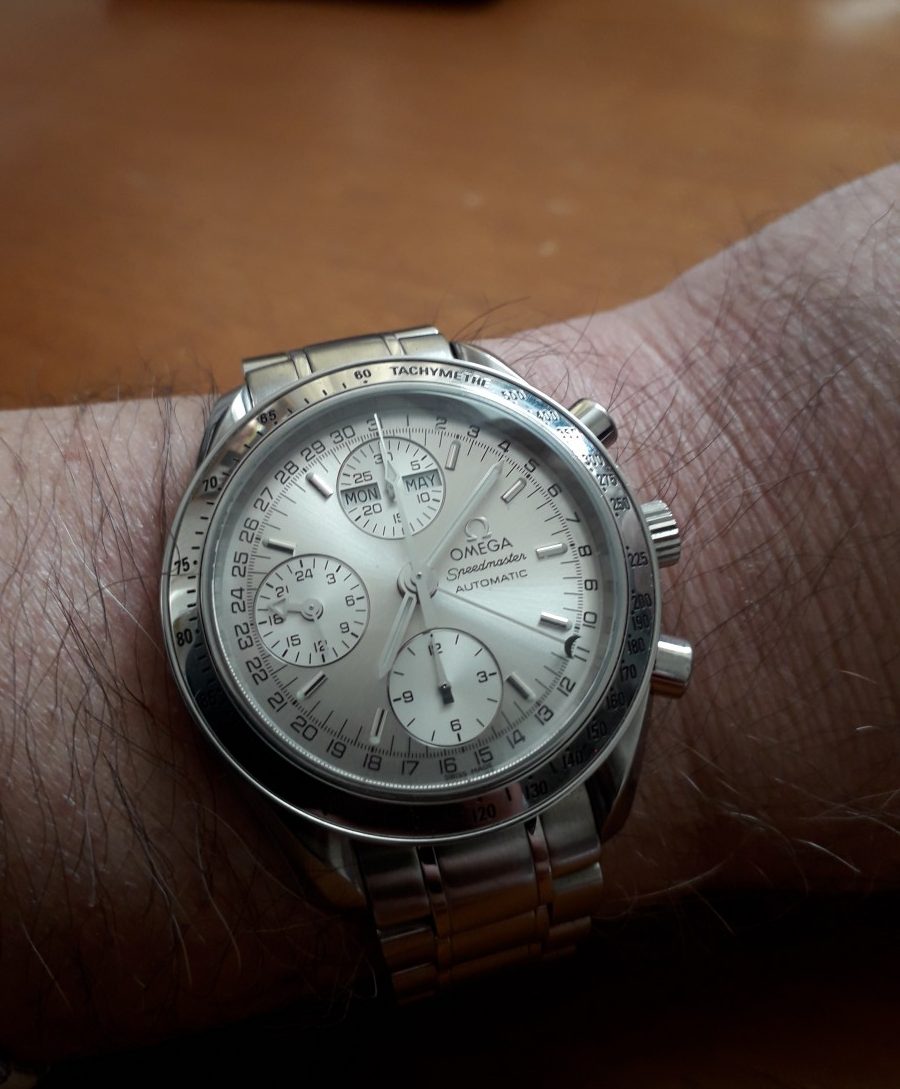
The size of the watch is interesting, being smaller at 39 mm than most other Speedmasters at 42 mm. The difference, in theory, may not seem great, but in practice it is. I have I think an average wrist, and this size is just right – not only physically but weight too. A salutary lesson: I bought a new Moonwatch (with date) in the mid-Nineties but sold it on a year later as I found it just too clunky. Needless to say I lost a fair amount of money, but hey, you live and learn!
Aesthetically, the watch is attractive and all aspects are nicely proportioned. The tachymetre bezel is polished with the numbers engraved and set in black. The dial has a silver sunburst finish, with the three recessed registers and hands in silver too. So, at 12 there is a round register (finished with a concentric pattern) for the 30 minute timer, and indicated by a dagger shaped hand. Also contained within are rectangular side-by-side windows for the day and month. At 3 are stacked watch details – from the top; the Ω sign in silver, then in black the name Omega, then a slanted Speedmaster and, finally, the word Automatic. At 6 is the 12 hour timer register – again with a dagger hand and circular finish. Finally at 9 is the 24 hr clock register, the hours pointed at with a skeleton arrow head hand, along with a thin lance hand for the running seconds. The main hands are pencil type and filled with an almost white lume. The stopwatch hand is thin with an almost diamond (spade) feature towards the end filled with lume. There is then a needle thin date pointer, ending in a small black “crescent moon” that “cups” the outboard date numbers. The hour indexes are polished silver baton semi-cylinders with beautifully rounded lumed “caps” at their ends. A minute/second “rail track” is the final feature. Some may say that it is all too “silver”. That may be true, but I feel it to be classy and all is pretty clear. That said, the main hands could have had a black border around them to make them a little more defined, but that is a minor criticism. The dial protected by an anti-reflective domed crystal.
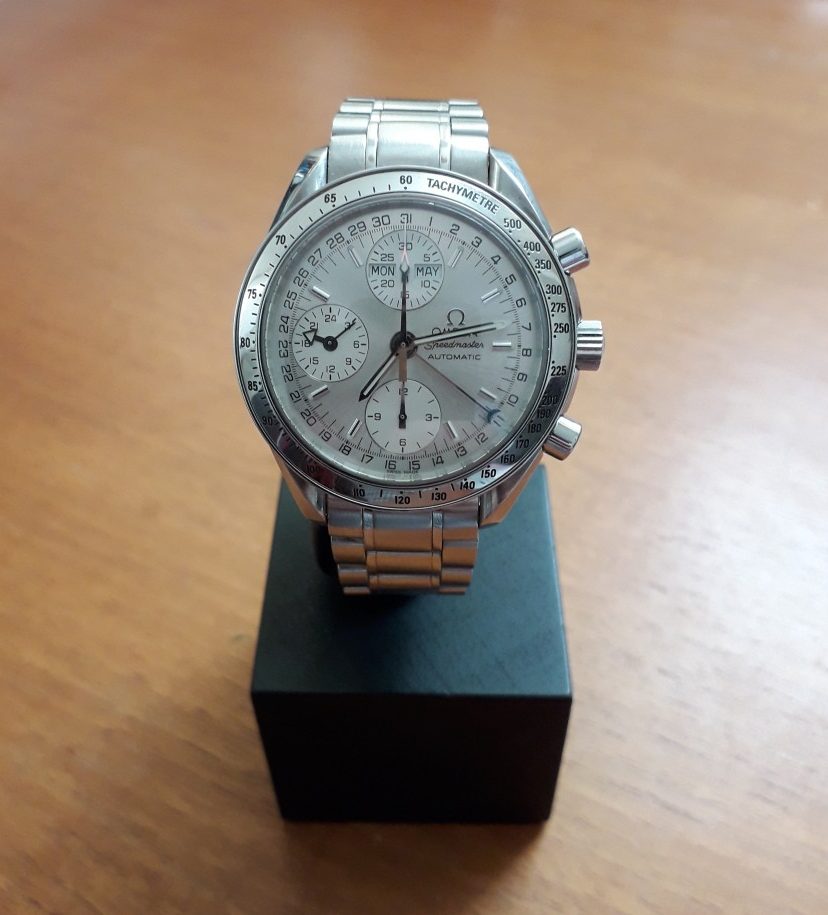
The case is another great feature. The sides have a light brushed finish. The tops of the lugs are polished and this continues around the top of the case. The shape of the lugs are worthy of note, twisting as they leave the case, with a brushed finish inboard, and falling down to meet the bracelet.
The bracelet is 18 mm wide and has five separate link components – thinner outboard brushed links, then small polished intermediate links, then one large brushed link. The bracelet is of a sliding clasp type, secured by a spring loaded mono side button. There is no easy adjustment however. Any modification has to be done via link removal, necessitating pins to be drifted/pushed out. There is a half link so good adjustment should be possible.
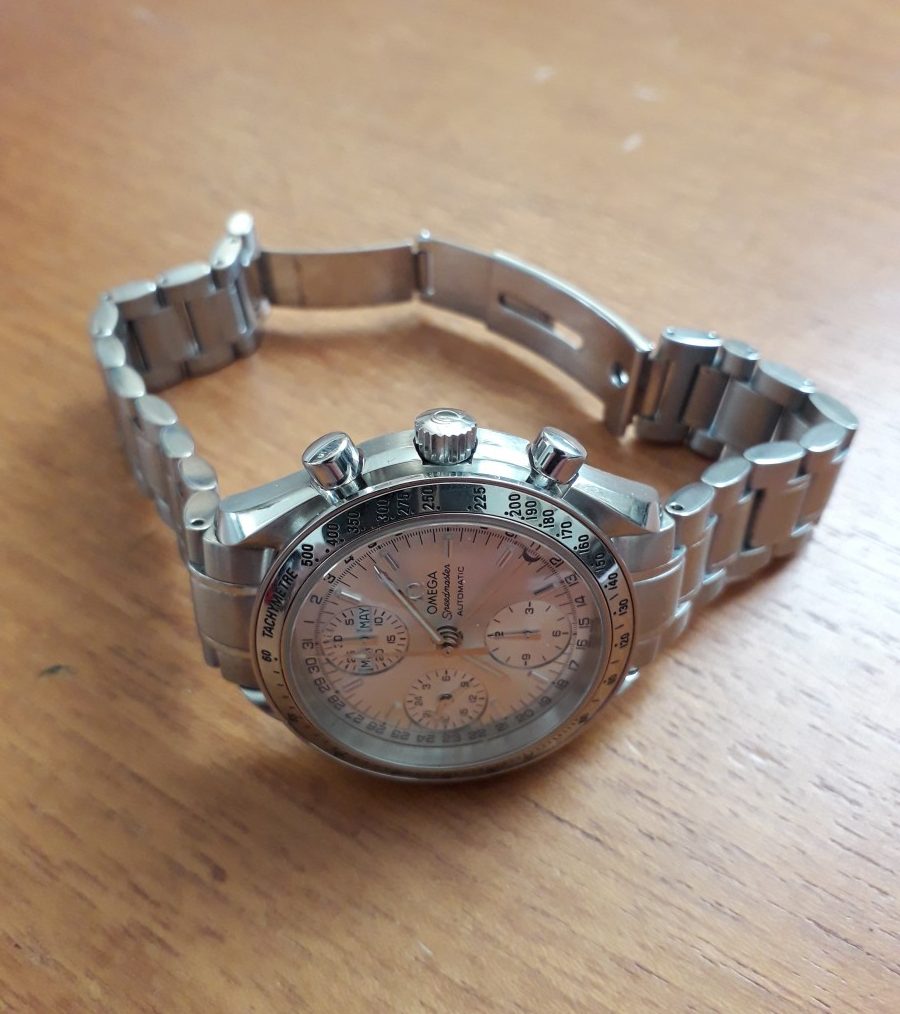
In terms of time/date adjustment this is done mainly via the crown, but for the day of the week a corrector on the case at 10 is used. The stopwatch functions are by simple cylindrical push buttons at 2 and 4. These are a little firm but businesslike. The reverse of the watch is protected by a solid press fit back, adorned with Omega’s Seahorse logo.
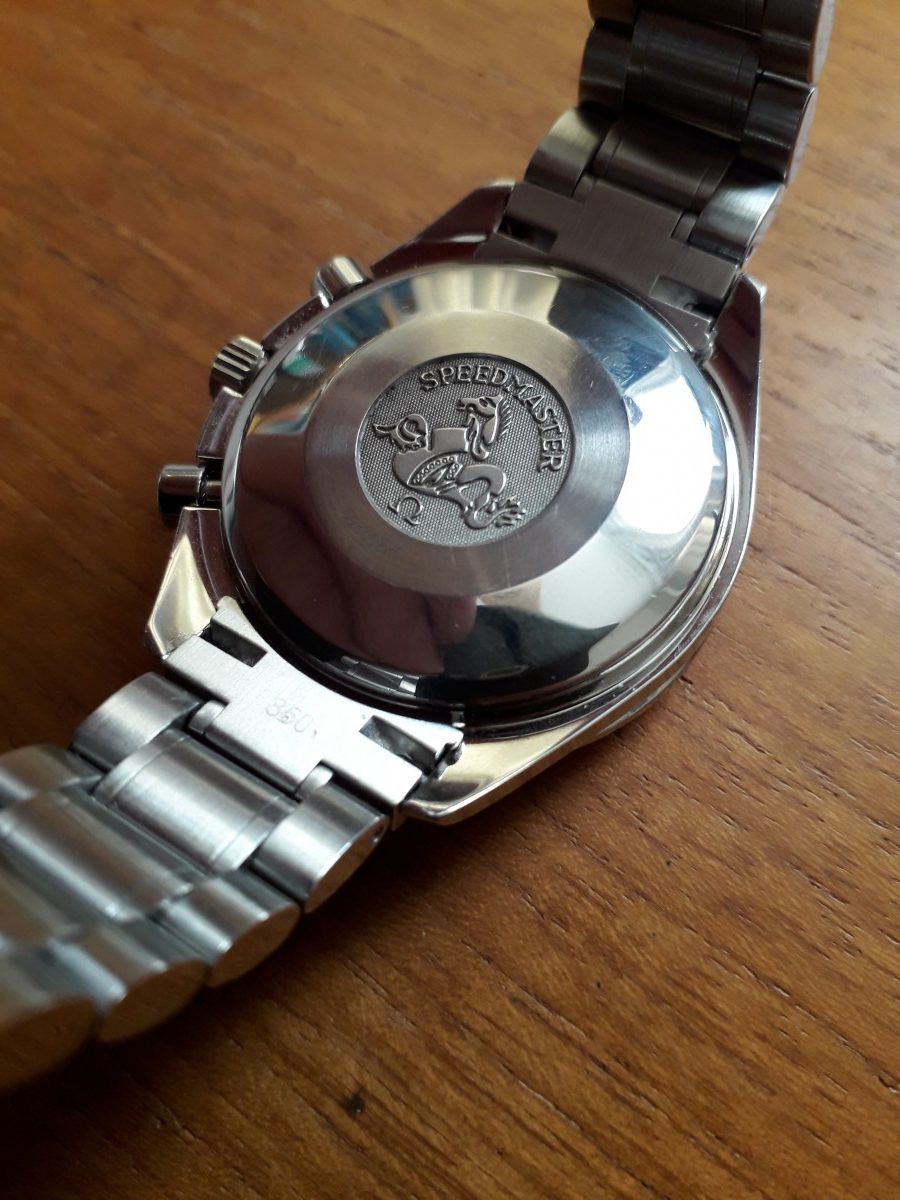
In conclusion, this is a watch from a revered maison, packed with lovely design features and numerous practical complications. It has a quality movement that should be very accurate. It is comfortable to wear – not too big yet not too small.
Lastly, price? Well, in some respects it is fortunate that the real Speedy enthusiasts tend to go for the larger non-date versions – including pre and post Moonwatches, special editions and also panda dials. As such I think all this has made these triple dates not so popular and therefore prices are reasonable, with decent versions going for around £1,800 – £2,000. There are in fact black versions at similar levels, but the rarer later blue dial option commands a £500 premium. I managed to secure my watch for the lower estimate and this included boxes and papers etc. Also, the previous owner apparently had it serviced a year or so earlier, and although there is no paperwork for this sadly, electronic testing (and a week of ownership) shows very accurate running so hopefully it is true. All in all there is no doubt that this watch is excellent value!
Rating: 4.5/5
Words/Images: The Writer

